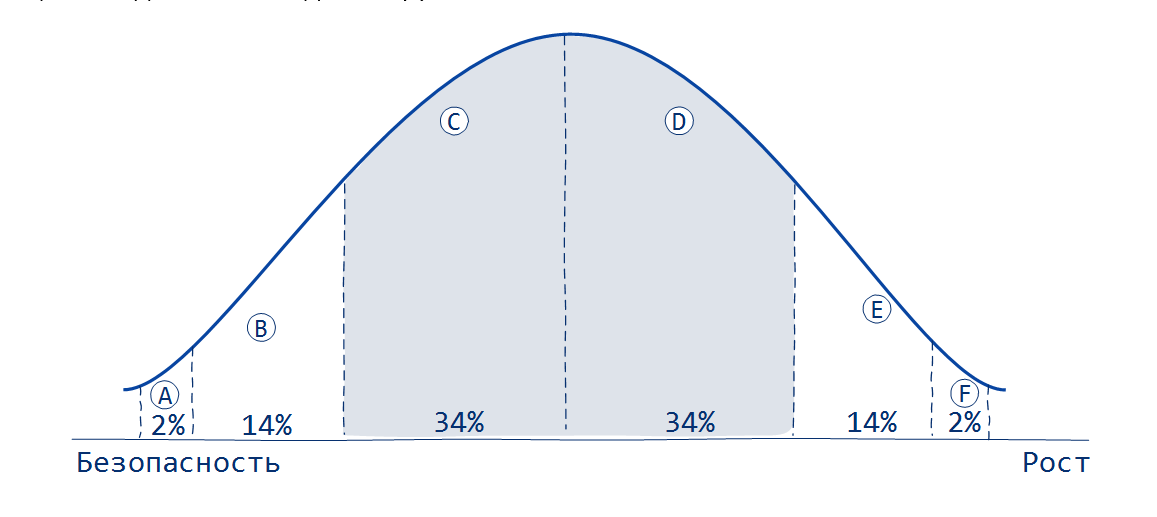Overcoming Resistance to Change

Resistance to change often becomes a serious obstacle to the implementation of various projects: the introduction of new information systems, management techniques, organizational transformations and other projects that affect the work of employees.
What is resistance to change, where does it come from and how to overcome it?
Denial, anger, bargaining ...
There is a misconception that resistance to change is the deliberate actions of employees aimed at ensuring that everything was “as before”. In fact, resistance to changes is due to the psychology of human behavior and is often not even recognized by them.
The well-known psychologist Virginia Satir, who analyzed how people perceive changes in their lives, called their source "an alien element." It doesn’t matter what it is. This could be an attack of a serious illness or a new leader with far-reaching plans. What they have in common is that these alien elements deprive a person of peace. People begin to feel confusion and severe irritation due to the fact that they no longer feel the ground under their feet and the stability of the near future. According to Satir, this painful phase is inevitable and after it occurs adaptation and subsequent adoption of a new reality.
Another model, described by Elizabeth Kubler-Ross in her book On Death and Dying, is included in change management textbooks. Kubler-Ross investigated the psychology of doomed patients, but despite this, the conclusions of her work interested management specialists. Kubler-Ross identified five levels of a person’s psychological state on the path to inevitability: denial, anger, bargaining (what should I do to reverse events?), Depression and, ultimately, acceptance. Not necessarily in such a sequence, but an employee of a company undergoing organizational changes experiences similar feelings.
You can’t be ordered to live in a new way
In practice, resistance to change is not expressed in deliberate actions against change, but primarily in a decrease in productivity. Employees do not start to do something “for evil,” more often they simply stop doing something, or they do not what they need (they act by inertia, the old fashioned way). And this happens not from malicious intent, but because of the psychological characteristics of a person’s behavior, in his reactions to changes.
An important conclusion follows from this - people cannot be forced not to resist. You can’t order “live a new life” - this is the first mistake that many implementers make. The use of command methods alone only shakes the employees, makes their future even more vague. This only increases resistance.
So, resistance to change is a decrease in productivity or employee involvement in work, due to negative expectations. The degree of resistance or support during a change is described by a change curve.

Prior to the announcement of changes, the employee’s productivity and involvement is at a constant average level. There is no reason to change it.
In change management, there are 5 stages of the transformation process:
1. Rejection
It immediately follows the announcement of the changes.
“Why change something, so everything’s good” - that’s what everyone always says when they first hear about changes, when the motives, goals and consequences of the changes are not understood.
2. Resistance
“It used to be better,” “Here in our previous system,” and so on. Employees are afraid that the changes will lead them out of their comfort zone and they will have to make some efforts. Employees are trying in every way to prove that it used to be better.
It is not uncommon for resistance at this stage to take hysterical forms. This is a period of unproductive disputes.
3. Analysis
It is at this stage that projects fail!
As resistance stops, employees fall into a “stopping state" —this is a form of depression in which a person does nothing. At this stage, there is an awareness of the inevitability of change. Employees analyze the possible consequences, understand what is required of them.
At this stage, employees need informational support, a clear indication of what needs to be done and what is not, who is responsible for what. If this is not the case, the project comes down on the brakes.
4. Interest
Once employees have realized and accepted the inevitability of change, they begin to seek the benefits of a new situation for themselves. The opening benefits and prospects form optimism about changes, employees become supporters of transformations.
5. Acceptance
New rules, tools and procedures are becoming the norm; employees understand that they open up new opportunities and allow solving problems more efficiently.
How to manage it?
Three factors are crucial in overcoming resistance to change: People, Motivation and Information.
People
Attitude to change is based on the human values scale: if security and stability are the highest value for him, he will avoid any changes, if growth and development are important to him, he will welcome them. According to the relationship of people to change social scientists divide all people into groups:

A . 2% - "resist" (not willing to change anything)
Bed and . 14% - "expectant" (fear of making a mistake, require proof)
C . 34% - "inert majority" (trying to identify errors and threats require pre-test)
D . 34% - “less inert majority” (trying to identify new opportunities, participate in discussions)
E . 14% - "testers" (they like the new ideas and perspectives; they are willing to try them, they are not buying the "product" and "promise", trying to be in the forefront)
the F . 2% are “inventors by nature” (they always think differently and want to change everything)
Depending on which group the employees belong to, the motive for joining the transformations will be different for them. Ways to overcome resistance for them will also be different.
- 16% of people (E, F) are innovators. Well, when the implementation team consists of such people - this guarantees the success of the transformation. The motivation of the innovators is “we did it”, “we are the first”.
- 34% (D) are inert, they value stability and immutability, but are not averse to using new opportunities. Such employees need to demonstrate what benefits and new opportunities they will receive from innovations. Maybe for someone it will be a new position or a new job. For this group, first of all, personal perspectives are important.
- 34% © are inert, cautious, afraid that things will get worse, just like for group D, first of all, the impact of changes on them personally is important to them. For this group of employees it is necessary to show that nothing fundamentally will change in their lives: salary, boss, responsibilities - in general, everything will be the same as now, some details will change. In a calm state, these employees will follow Group D, seeing that nothing happens to them and accepting, after them, all changes.
- 14% (B) - until the last, all changes will be considered a mistake and a bad idea. Such employees, as a rule, do not have an active influence on the course of changes. But it is very important that they are not in the implementation team. One such employee in the team is able to stop the whole process.
- 2% (A) - militant retrograde. Even when everything happens, they will be nostalgic for the old days. It is very important to know such employees in your company. At the time of change, it is best to send them on vacation to avoid their destructive influence.
Motivation
One of the main tasks of the implementation team is to find the benefits of the changes for literally every employee who will be affected by these changes. You need to be clearly aware that change is stress for employees and only the right motivation can help read it. The nature of this motivation depends on which of the groups the employee relates to the changes.
Informing
Often, in the process of change, the role of information is greatly underestimated. One has to see how the team of revolutionaries is developing something for a long time, then everyone is announcing that they need to live in a new way. This is an erroneous tactic, most often, it leads to all sorts of losses.
An organizational system is a community of people. No need to harbor illusions. The work of the "group of revolutionaries" will become known almost immediately. And in the absence of official information about their work, it will be replaced by speculation and rumors, which will by no means be positive. People generally tend to prepare for the worst, and even more so in our country. As a result, by the time the changes are announced, they will already have a negative image, the inert majority will already be opposed to the changes.
Therefore, it is important to start informing about changes immediately, even at the beginning of preparation for them. It is necessary to give a reasonable explanation of their need, the goals that pursue the change, roughly indicate the time frame.
It’s not necessary to talk about all the details, but you need to convey the idea that the changes will be positive and beneficial - this will help in the future to cope with resistance to change.
